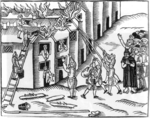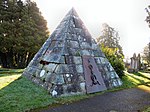Elmore F.C.
1947 establishments in EnglandAssociation football clubs established in 1947Devon and Exeter Football LeagueElmore F.C.EngvarB from June 2018 ... and 6 more
Football clubs in DevonFootball clubs in EnglandSouth West Peninsula LeagueSouth Western Football LeagueTiverton, DevonWestern Football League
Elmore Football Club is a football club based in Tiverton, Devon, England. They are currently members of the Devon League and play at Horsdon Park.
Excerpt from the Wikipedia article Elmore F.C. (License: CC BY-SA 3.0, Authors).Elmore F.C.
Heathcoat Way, Mid Devon
Geographical coordinates (GPS) Address Nearby Places Show on map
Geographical coordinates (GPS)
| Latitude | Longitude |
|---|---|
| N 50.906002777778 ° | E -3.4742972222222 ° |
Address
Heathcoat Way
EX16 4DE Mid Devon
England, United Kingdom
Open on Google Maps










